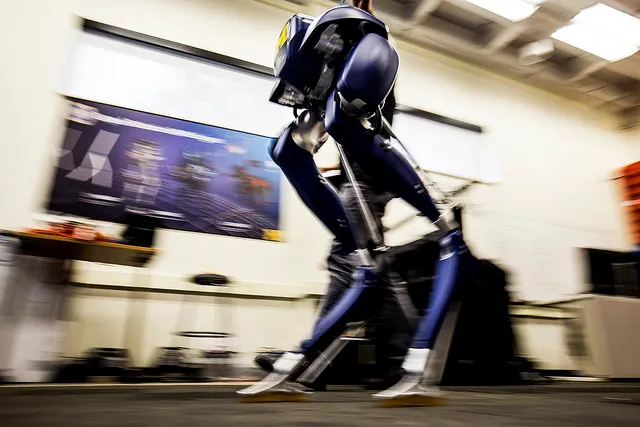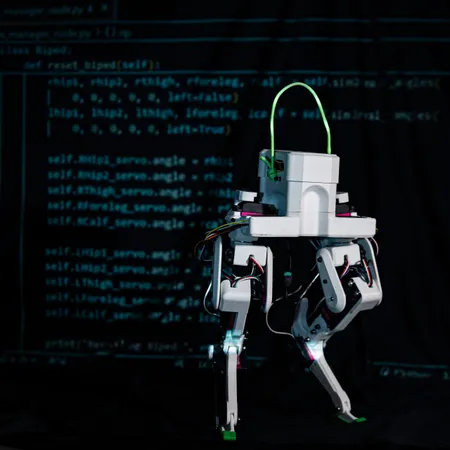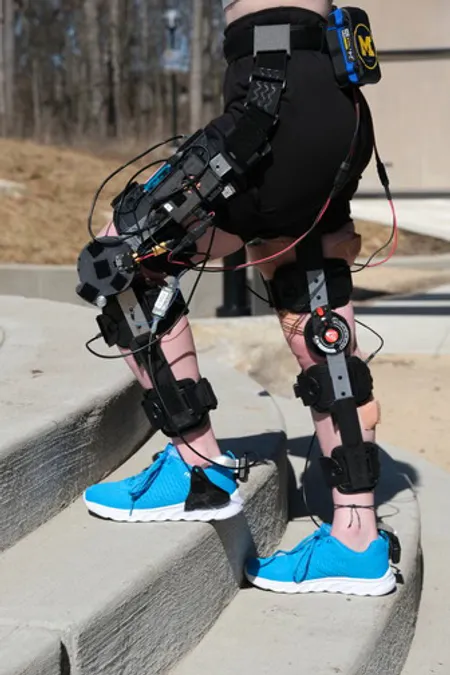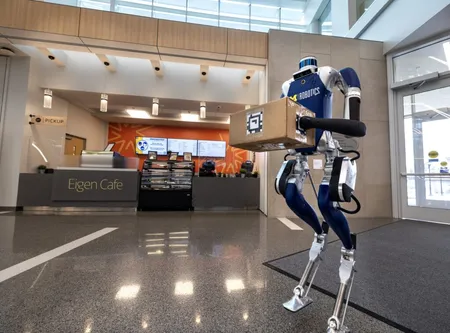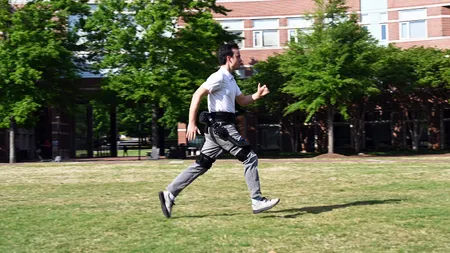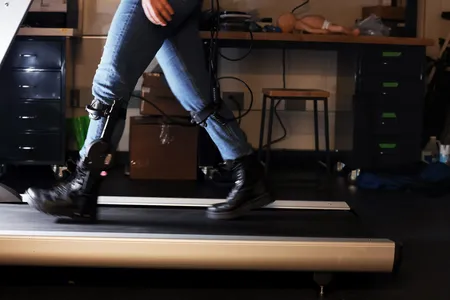Why walk or run when you can roll or ride? On their own, legged robots can undertake challenges no other mobile robot can handle. This includes moving freely in challenging wilderness or hazardous environments for search and rescue operations. And as assistive devices for humans, legged robots can help enable everyday activities for people whose disabilities might otherwise limit their lifestyles.
Michigan houses the best academic research lab devoted to two-legged robots in the world. The goal is to endow them with humanlike mobility and grace. U-M researchers design algorithms that allow entire families of robots to walk on uncertain terrain, or to vary their pace according to the roughness of slopes and the urgency of their situation. Making all this possible is the widely adopted hybrid zero dynamics feedback system, a Michigan invention that keeps robots from stumbling and falling.
U-M’s early two-legged robots operated along a single plane, using a bar or slider to keep from falling. The second of these robots, MABEL, was perhaps the world’s fastest (nearly seven miles an hour) two-legged robot with knees in its day. Subsequent generations, which roam freely in three-dimensional space like we do, include MARLO, which handles uneven terrain and Cassie, a tougher, lighter two-legged robot with eyes, who walks at 11 different gaits forwards and backwards, 11 sideways gaits, and 11 different gaits for slopes — or 1,331 different ways of walking.
Some of the algorithms suitable for two-legged robots have been adapted by researchers elsewhere to design highly advanced prosthetic limbs. A French company called Wandercraft, has incorporated methods developed at U-M to create exoskeletons that enable people paralyzed from the waist down to walk without crutches.
Another research thrust delves into blind walking. What can a robot do when it walks without having a good perception of its walking surface? How much uncertainty can it handle? Unlike autonomous vehicles that typically rely on pre-programmed maps and heavy, power-hungry sensors and processors, Michigan is emphasizing light, efficient, walking robots that build their own maps from scratch as they walk. This would make them especially useful for search-and-rescue operations where they may need to navigate within the debris of a damaged building, or travel through the woods while avoiding obstacles like fallen tree limbs.
